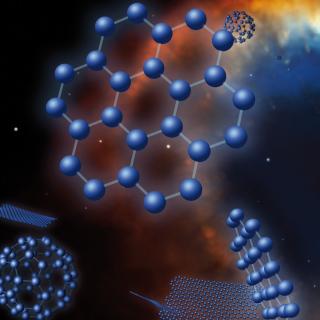Bibcode
Nidever, David L.; Hasselquist, Sten; Hayes, Christian R.; Hawkins, Keith; Povick, Joshua; Majewski, Steven R.; Smith, Verne V.; Anguiano, Borja; Stringfellow, Guy S.; Sobeck, Jennifer S.; Cunha, Katia; Beers, Timothy C.; Bestenlehner, Joachim M.; Cohen, Roger E.; Garcia-Hernandez, D. A.; Jönsson, Henrik; Nitschelm, Christian; Shetrone, Matthew; Lacerna, Ivan; Allende Prieto, Carlos; Beaton, Rachael L.; Dell'Agli, Flavia; Fernández-Trincado, José G.; Feuillet, Diane; Gallart, Carme; Hearty, Fred R.; Holtzman, Jon; Manchado, Arturo; Muñoz, Ricardo R.; O'Connell, Robert; Rosado, Margarita
Referencia bibliográfica
The Astrophysical Journal
Fecha de publicación:
6
2020
Revista
Número de citas
114
Número de citas referidas
99
Descripción
We report the first APOGEE metallicities and α-element abundances measured for 3600 red giant stars spanning a large radial range of both the Large (LMC) and Small Magellanic Clouds, the largest Milky Way (MW) dwarf galaxies. Our sample is an order of magnitude larger than that of previous studies and extends to much larger radial distances. These are the first results presented that make use of the newly installed southern APOGEE instrument on the du Pont telescope at Las Campanas Observatory. Our unbiased sample of the LMC spans a large range in metallicity, from [Fe/H] = -0.2 to very metal-poor stars with [Fe/H] ≍ -2.5, the most metal-poor Magellanic Cloud (MC) stars detected to date. The LMC [α/Fe]-[Fe/H] distribution is very flat over a large metallicity range but rises by ∼0.1 dex at -1.0 < [Fe/H] ≲ -0.5. We interpret this as a sign of the known recent increase in MC star formation activity and are able to reproduce the pattern with a chemical evolution model that includes a recent "starburst." At the metal-poor end, we capture the increase of [α/Fe] with decreasing [Fe/H] and constrain the "α-knee" to [Fe/H] ≲ -2.2 in both MCs, implying a low star formation efficiency of ∼0.01 Gyr-1. The MC knees are more metal-poor than those of less massive MW dwarf galaxies such as Fornax, Sculptor, or Sagittarius. One possible interpretation is that the MCs formed in a lower-density environment than the MW, a hypothesis that is consistent with the paradigm that the MCs fell into the MW's gravitational potential only recently.
Proyectos relacionados

Evolución Galáctica en el Grupo Local
La formación y evolución de galaxias es un problema fundamental en Astrofísica. Su estudio requiere “viajar atrás en el tiempo”, para lo cual hay dos enfoques complementarios. El mas extendido consiste en analizar las propiedades de las galaxias a diferentes distancias cosmológicas. Nuestro equipo se concentra en el otro enfoque, denominado
Matteo
Monelli

Nucleosíntesis y procesos moleculares en los últimos estados de la evolución estelar
Las estrellas de masa baja e intermedia (M < 8 masas solares, Ms) representan la mayoría de estrellas en el Cosmos y terminan sus vidas en la Rama Asintótica de las Gigantes (AGB) - justo antes de formar Nebulosas Planetarias (NPs) - cuando experimentan procesos nucleosintéticos y moleculares complejos. Las estrellas AGB son importantes
Domingo Aníbal
García Hernández

Abundancias Químicas en Estrellas
La espectroscopía de estrellas nos permite determinar las propiedades y composiciones químicas de las mismas. A partir de esta información para estrellas de diferente edad en la Vía Láctea es posible reconstruir la evolución química de la Galaxia, así como el origen de los elementos más pesados que el boro, forjados principalmente en los interiores
Carlos
Allende Prieto